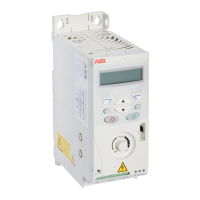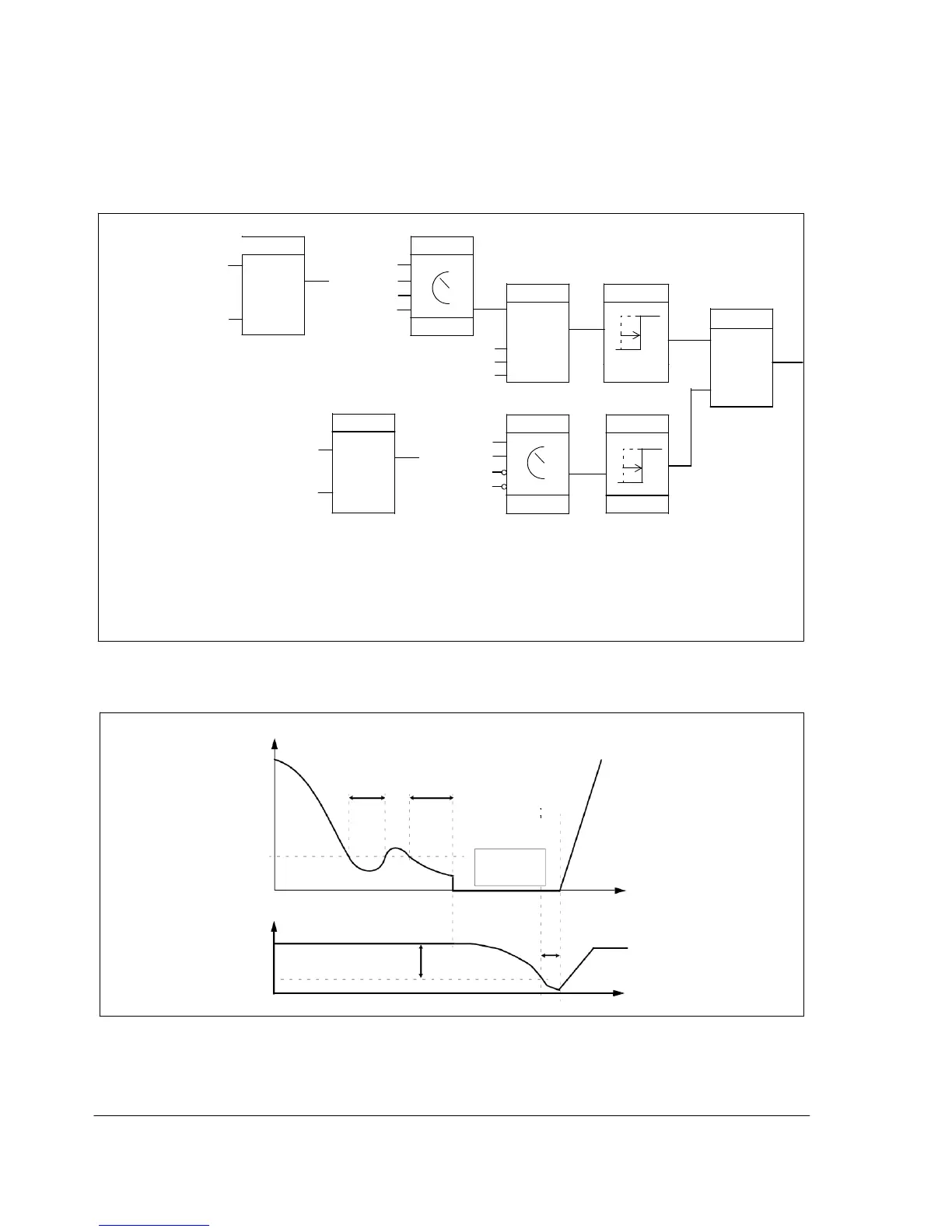PID sleep functionality
The block diagram below illustrates the sleep function enable/disable logic. The
sleep function can be put into use only when the PID control is active.
output
frequency
Compare
1
NOT SEL
INTERNAL
Select
1<2
DI1
And
.
Delay
4023
2
.
4022
%refActive
&
PIDCtrlActive
modulating
t
4024
Set/Reset
S
S/R
1)
R
0132
Compare
1
1>2
NOT SEL
INTERNAL
D
I
.
1
.
Select
Delay
t
4025
2
.
4022 4026
1) 1 = Activate sleeping
0 = Deactivate sleeping
%refActive: The % reference (EXT REF2) is in use. See parameter 1102 EXT1/EXT2 SEL.
PIDCtrlActive: Parameter 9902 APPLIC MACRO = 6 (PID CONTROL).
modulating: Drive IGBT control is operating.
Example
The time scheme below visualizes the operation of the sleep function.
Motor speed
t
d
= Sleep delay (4024)
t<t
d
t
d
Sleep
level
(4023
)
Actual value
Wake-up deviation
(4025)
Control panel
display
:
PID
S
L
EEP
t
Stop
St
ar
t
Wake-up delay
(4026)
t

